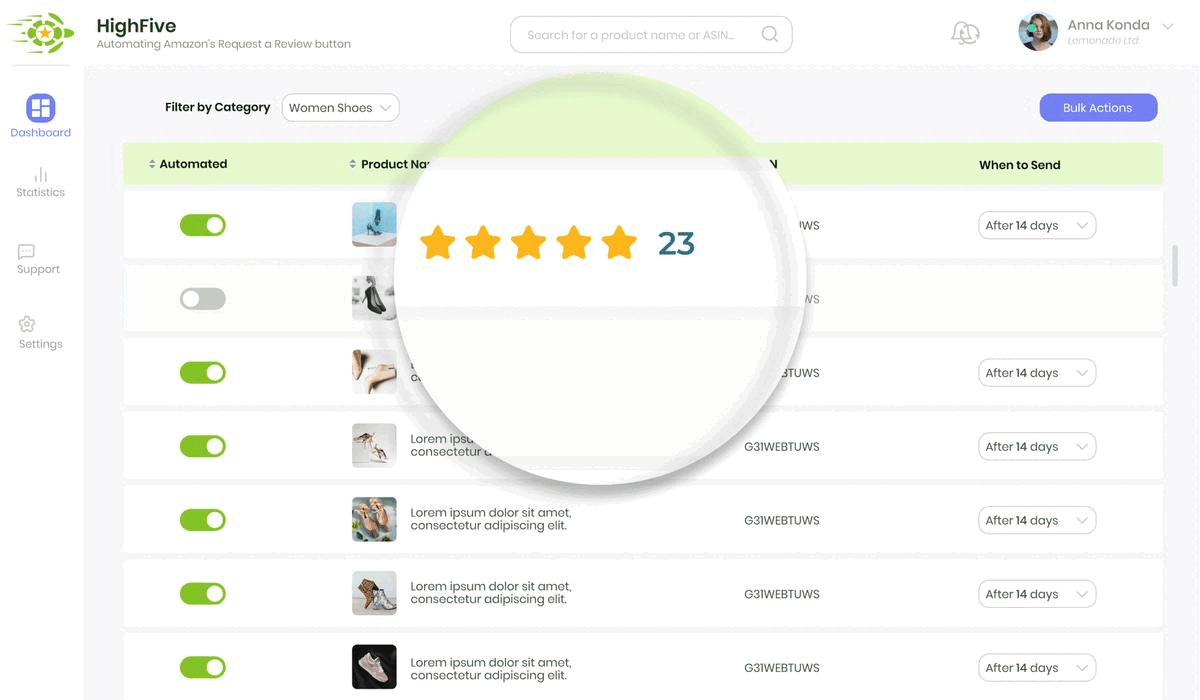We've often found that the most successful products in the market are not necessarily those with the highest quality or the most innovative features. Instead, they are those that have mastered the art of positioning, both organically and through advertising. After all, a product's visibility is its gateway to success.
In this short guide, we reveal a simple yet effective test to determine the strength of your organic positioning. By gradually reducing your daily advertising budget, you can assess the impact on your overall sales. If sales remain unaffected, it's a testament to your product's strong organic position, which is a sign of a robust and healthy product.
However, achieving that golden balance between organic and advertising sales is a journey in itself. The search term isolation approach, as detailed in this guide, is an excellent technique to help you navigate your journey
Remember that the journey to profitability is a marathon, not a sprint. It's about making small, calculated moves that compound over time to deliver significant results. Let's embark on this exciting journey together, one step at a time.
Tips for effective Amazon sellers
- Understand the importance of organic versus ad sales: Knowing the balance between these two can increase profitability.
- Aim for a 25/75 ratio: The general guideline suggests that 25% of your sales should be driven by advertising and 75% by organic sales.
- Be flexible with the ratio: While 25/75 is the general guideline, this ratio is not set in stone and can vary depending on the product and its life cycle stage.
- Prioritize product credibility: When launching a new product, your primary goal should be to gain credibility through ratings and reviews.
- Rely on advertising for new products: Understand that for new products, most of the sales will likely be driven by advertising.
- Use Amazon PPC strategy: This can be an effective tool to drive sales, particularly for new products.
- Don’t expect a 25/75 ratio for new products: It’s not feasible to expect 25% ad sales and 75% organic sales when you’re just launching a product.
- Be patient: It takes time to build organic sales and gain credibility.
- Keep track of your ACoS (Advertising Cost of Sale): This is a key metric to monitor your advertising performance.
- Continually optimize your ads: Regularly review and adjust your advertising strategy based on performance.
- Invest in high-quality product listings: Good product descriptions and images can boost organic sales.
- Monitor your sales: Keep track of your sales, both organic and ad-driven, to understand your progress and adjust your strategy if necessary.
- Seek reviews: Actively seek out customer reviews to boost your product’s credibility.
- Keep up with Amazon’s policies: Amazon has strict rules for sellers, so make sure you’re always compliant to avoid penalties.
- Experiment and learn: Try different strategies, learn from the results, and continually adjust your approach to find what works best for your product.
- Stay customer focused: Ultimately, providing a high-quality product and excellent customer service will help increase organic sales and positive reviews.
Boost Profit by Balancing Organic and Ads Sales
Many Amazon sellers have been asking about the optimal ratio between their organic versus ad sales. The answer to that question is…..it depends.

Organic versus Ad Sales
Most guidelines refer to a ratio of 25/75 where advertising makes up 25% of sales and organic sales make up 75% of total sales but this can vary depending on the product’s life cycle stage.
When launching a new product the ratio will be different. During the first couple of months, your goal is for the new product to gain credibility by obtaining ratings and reviews. At this stage, most of the sales will be driven by advertising using your Amazon PPC strategy and a 25/75 ratio is not feasible.
If an existing product has a good profit margin then you have more space for PPC optimization.
Guidelines
Once in a while, you should try testing a good product that is running well on an existing campaign. Start by slowly decreasing your daily budget and check what happens. If your overall sales are not affected, this is because your organic position is doing well for most keywords. By doing this simple test, you can reduce your ACoS and increase profitability.
This following tutorial discusses the ratio considerations and provides tips to achieve a good ratio between your organic and advertising sales.
The search term isolation approach can help you achieve a good ratio over time.
